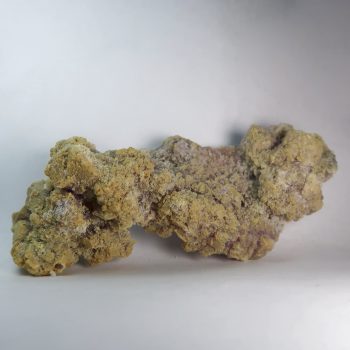Coquimbite
Coquimbite is a secondary iron sulphate mineral that forms in post mining environments, typically alongside other sulphate mineral species.
Showing the single result
Information about Coquimbite
Coquimbite is a secondary iron sulphate mineral that forms in post mining environments, typically alongside other sulphate mineral species.
It is a member of the coquimbite group, which includes the following:
- Aluminocoquimbite – Al2Fe2(SO4)6(H2O)12 · 6H2O
- Coquimbite – AlFe3(SO4)6(H2O)12 · 6H2O
- Paracoquimbite – Fe4(SO4)6(H2O)12 · 6H2O
Unanalysed members of the group are likely to be referred to simply as coquimbite.
Uses and History
Coquimbite has no significant industrial uses but is valued by mineral collectors for its distinctive crystals and colour. Its occurrence is also studied in geology as an indicator of acidic, sulfate-rich environments, providing insights into weathering processes and the geochemistry of evaporite deposits.
Coquimbite was first described in 1841 by August Breithaupt and named after its type locality in the Coquimbo region of Chile. The mineral is commonly found in arid, oxidised environments associated with pyrite and other sulfide minerals. Notable deposits include locations in Chile, Peru, Bolivia, and Spain, as well as some occurrences in the United States.
Mineralogy
Light violet, purple, green, greenish-white, blue-white, brown-white, yellow, brown.
Hazards and Warnings
Mineral collectors should wash their hands after handling specimens, to avoid any exposure to potential toxins.
Almost all rocks, minerals (and, frankly, almost all other substances on earth) can produce toxic dust when cutting, which can cause serious respiratory conditions including silicosis.
When cutting or polishing rocks, minerals, shells, etc, all work should be done wet to minimise the dust, and a suitable respirator or extraction system should be used.
Translations
Arabic:
Hindi:
Portuguese:
Bengali:
Indonesian:
Punjabi:
English:
Italian:
Russian:
- Кокимбит
French:
Japanese:
Spanish:
- Coquimbita
German:
- Coquimbit
Korean:
Thai:
Gujurati:
Mandarin Chinese:
Urdu:

